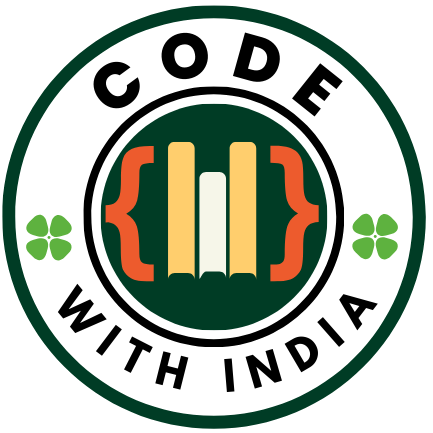Web development is a dynamic field, and whether you’re a beginner or an experienced developer, building projects is one of the best ways to sharpen your skills. Here are five project ideas that not only challenge your coding abilities but also enhance your portfolio. Each project includes a brief overview, key features, and sample code to get you started.
1. Personal Portfolio Website

Overview: A personal portfolio website is a must-have for every developer. It showcases your skills, projects, and experience. This project will teach you how to create a responsive and visually appealing website.
Key Features:
- Responsive design using CSS Flexbox and Grid
- Interactive sections for projects, skills, and contact
- Aesthetic animations and transitions
- Integration with a content management system (CMS) like WordPress for easy updates
Sample Code:
htmlCopy code<!DOCTYPE html>
<html lang="en">
<head>
<meta charset="UTF-8">
<meta name="viewport" content="width=device-width, initial-scale=1.0">
<title>My Portfolio</title>
<link rel="stylesheet" href="styles.css">
</head>
<body>
<header>
<nav>
<ul>
<li><a href="#home">Home</a></li>
<li><a href="#about">About</a></li>
<li><a href="#projects">Projects</a></li>
<li><a href="#contact">Contact</a></li>
</ul>
</nav>
</header>
<section id="home">
<h1>Welcome to My Portfolio</h1>
<p>Web Developer & Designer</p>
</section>
<!-- More sections here -->
</body>
</html>
Execution: Start by designing the layout in tools like Figma or Adobe XD. Then, translate the design into code using HTML, CSS, and JavaScript. You can use frameworks like Bootstrap for responsive design. For hosting, platforms like GitHub Pages or Netlify are great options.
2. E-Commerce Website

Overview: An e-commerce website allows you to dive into more complex web development concepts, such as user authentication, payment gateways, and product management.
Key Features:
- Product listing and categorization
- Shopping cart functionality
- Secure user authentication
- Payment integration (e.g., Stripe, PayPal)
- Admin dashboard for managing products and orders
Sample Code:
javascriptCopy code// Example: Adding a product to the cart
let cart = [];
function addToCart(productId) {
let product = products.find(p => p.id === productId);
cart.push(product);
console.log(cart);
}
// Example products array
let products = [
{ id: 1, name: "Product 1", price: 100 },
{ id: 2, name: "Product 2", price: 150 }
];
Execution: Start by setting up a basic server using Node.js and Express. Use MongoDB or MySQL for the database. Implement the front-end with React or Angular. For payment integration, use the Stripe API or PayPal SDK. Deploy the website on platforms like Heroku or Vercel.
3. Blog Platform

Overview: A blog platform allows users to create, edit, and delete posts. This project will help you understand CRUD (Create, Read, Update, Delete) operations and how to manage user-generated content.
Key Features:
- User authentication (sign-up, login)
- CRUD operations for blog posts
- Rich text editor for writing posts
- Comment system for user engagement
- Search functionality
Sample Code:
pythonCopy code# Example: Creating a blog post (Flask and SQLAlchemy)
from flask import Flask, request, render_template
from flask_sqlalchemy import SQLAlchemy
app = Flask(__name__)
app.config['SQLALCHEMY_DATABASE_URI'] = 'sqlite:///blog.db'
db = SQLAlchemy(app)
class Post(db.Model):
id = db.Column(db.Integer, primary_key=True)
title = db.Column(db.String(100), nullable=False)
content = db.Column(db.Text, nullable=False)
@app.route('/new_post', methods=['POST'])
def new_post():
title = request.form['title']
content = request.form['content']
post = Post(title=title, content=content)
db.session.add(post)
db.session.commit()
return "Post created!"
if __name__ == "__main__":
app.run(debug=True)
Execution: Begin by setting up a Flask or Django server for the back-end. Use SQLAlchemy for managing the database. The front-end can be created using vanilla HTML/CSS or a framework like Vue.js. For deployment, consider using DigitalOcean or AWS.
4. Real-Time Chat Application

Overview: A real-time chat application allows users to send and receive messages instantly. This project will introduce you to WebSocket technology and real-time data processing.
Key Features:
- Real-time messaging using WebSocket
- User authentication
- Chat rooms and private messaging
- Notifications for new messages
- File sharing capabilities
Sample Code:
javascriptCopy code// Example: Setting up a WebSocket server with Node.js
const WebSocket = require('ws');
const wss = new WebSocket.Server({ port: 8080 });
wss.on('connection', ws => {
ws.on('message', message => {
console.log('received:', message);
wss.clients.forEach(client => {
if (client !== ws && client.readyState === WebSocket.OPEN) {
client.send(message);
}
});
});
ws.send('Welcome to the chat!');
});
Execution: Set up a server using Node.js with the ws library for WebSocket. Use React or Angular for the front-end. You can host the application on platforms like Heroku or AWS. Implement additional features like file sharing or chat room creation for more complexity.
5. Weather Forecasting App

Overview: A weather forecasting app fetches weather data from an API and displays it to the user. This project helps you understand API integration and data manipulation.
Key Features:
- Fetch and display real-time weather data
- Search functionality for different cities
- Responsive design for mobile and desktop
- Display of weather conditions, temperature, humidity, etc.
- Option to toggle between Fahrenheit and Celsius
Sample Code:
javascriptCopy code// Example: Fetching weather data from OpenWeatherMap API
const apiKey = 'your_api_key';
const city = 'London';
fetch(`https://api.openweathermap.org/data/2.5/weather?q=${city}&appid=${apiKey}`)
.then(response => response.json())
.then(data => {
console.log(`Temperature in ${city}: ${data.main.temp}°K`);
})
.catch(error => console.error('Error fetching data:', error));
Execution: Use the OpenWeatherMap API or any other weather API for data. Build the front-end with HTML, CSS, and JavaScript. For deployment, platforms like Netlify or GitHub Pages are ideal. You can add additional features like a five-day forecast or a graphical representation of the weather data.
Conclusion

Building these web development projects will not only enhance your coding skills but also provide you with a solid portfolio to showcase to potential employers. Each project covers a different aspect of web development, from front-end design to back-end integration and API usage. Start small, iterate, and enjoy the learning process as you bring these ideas to life!
Read More: https://www.mygreatlearning.com/blog/web-development-project-ideas/


Techno rozen Very well presented. Every quote was awesome and thanks for sharing the content. Keep sharing and keep motivating others.